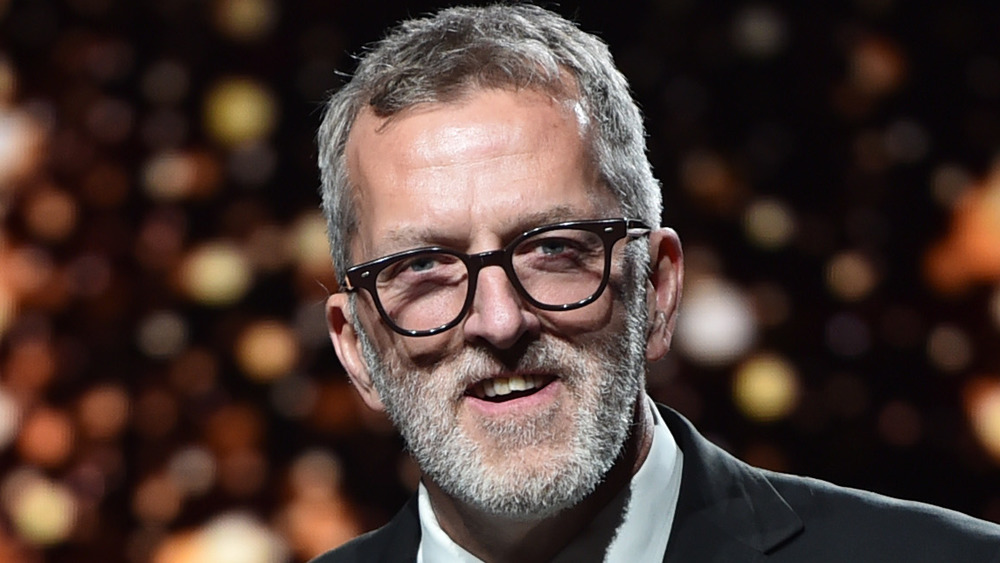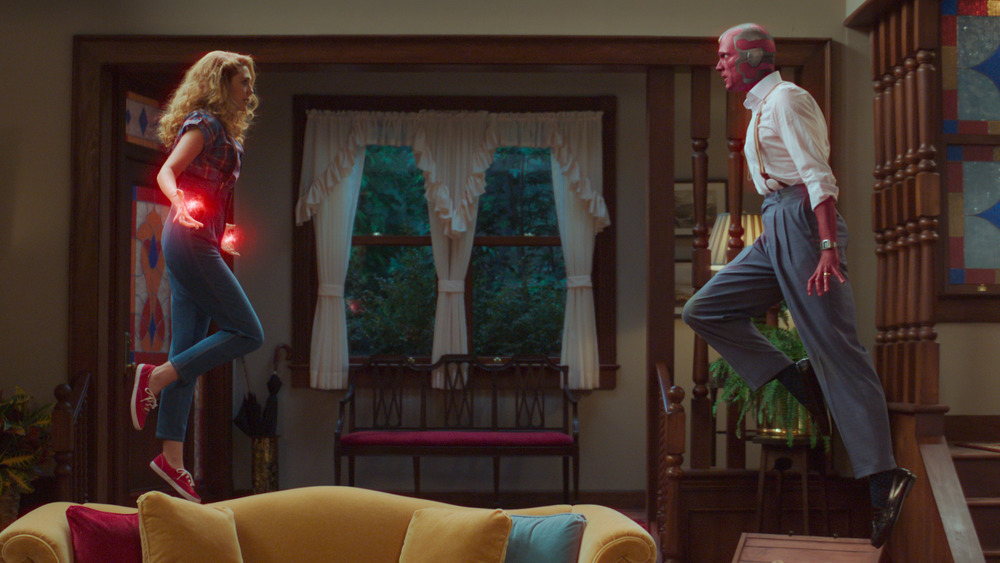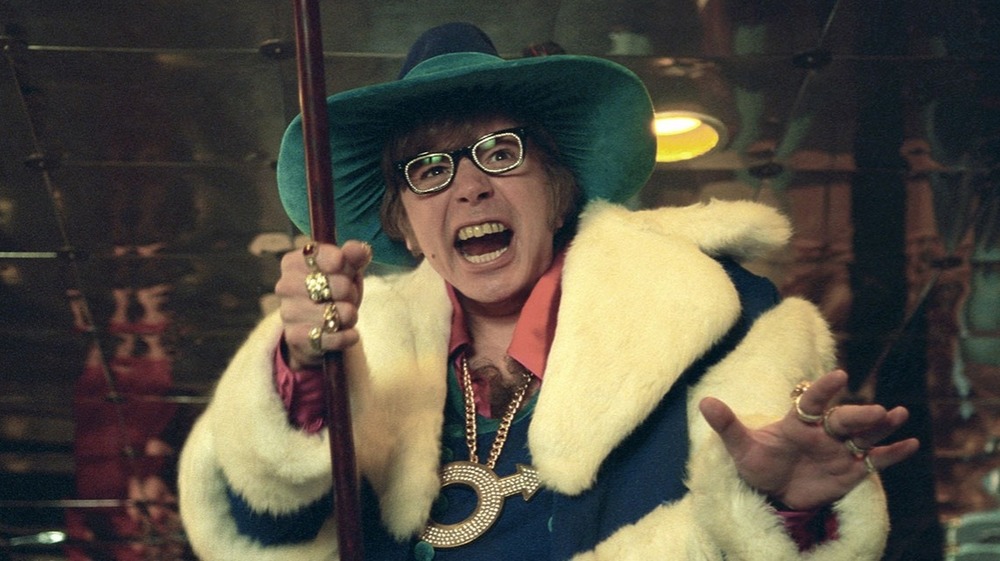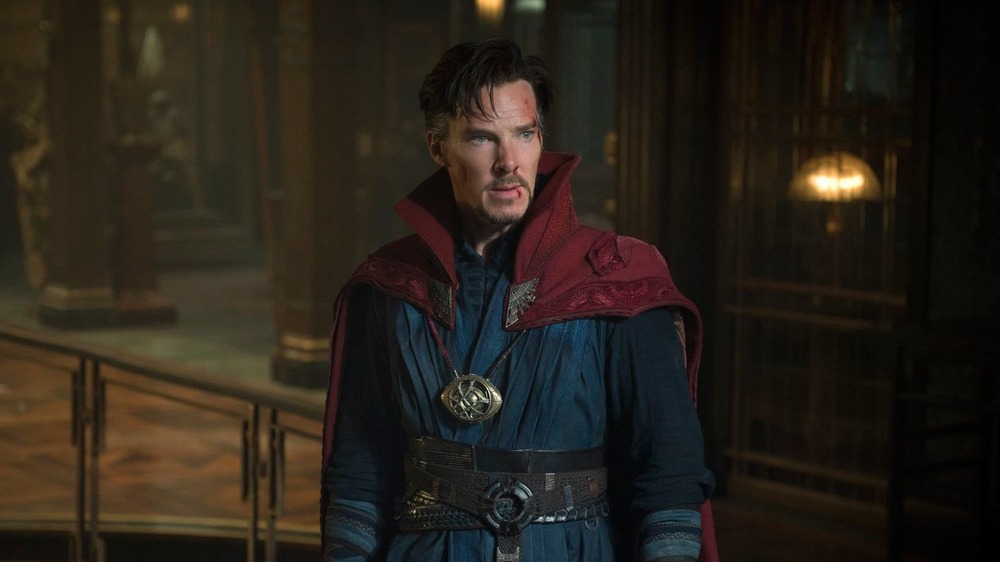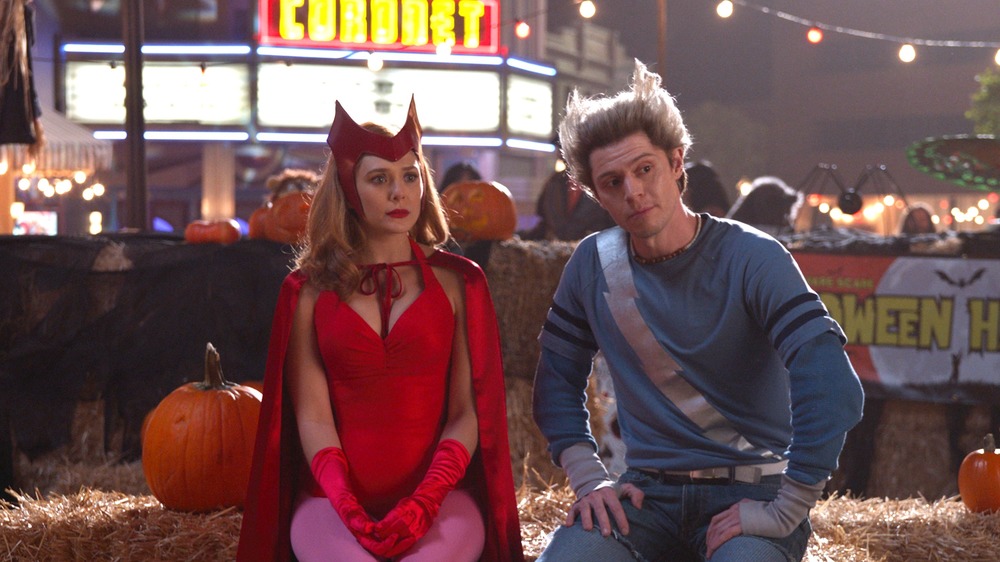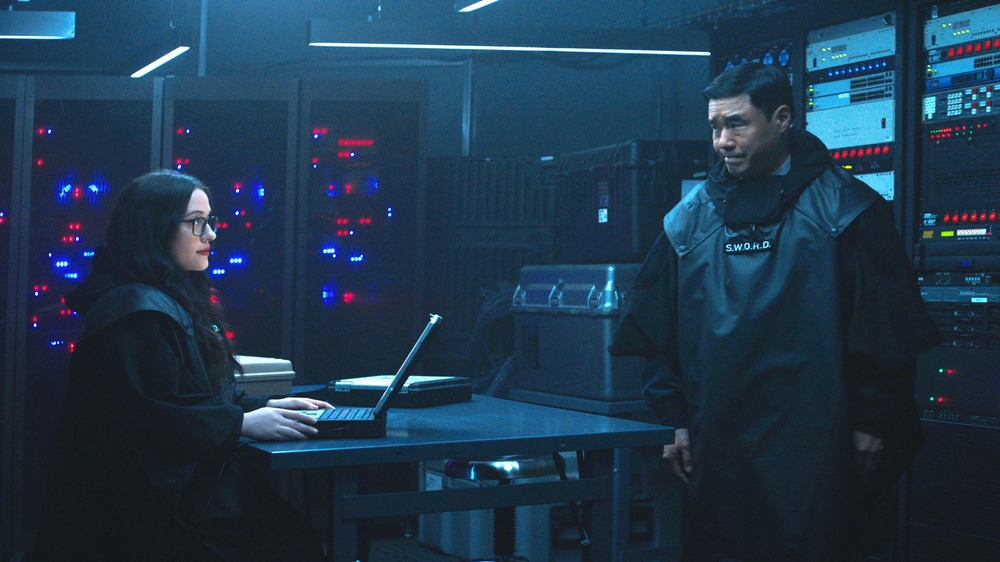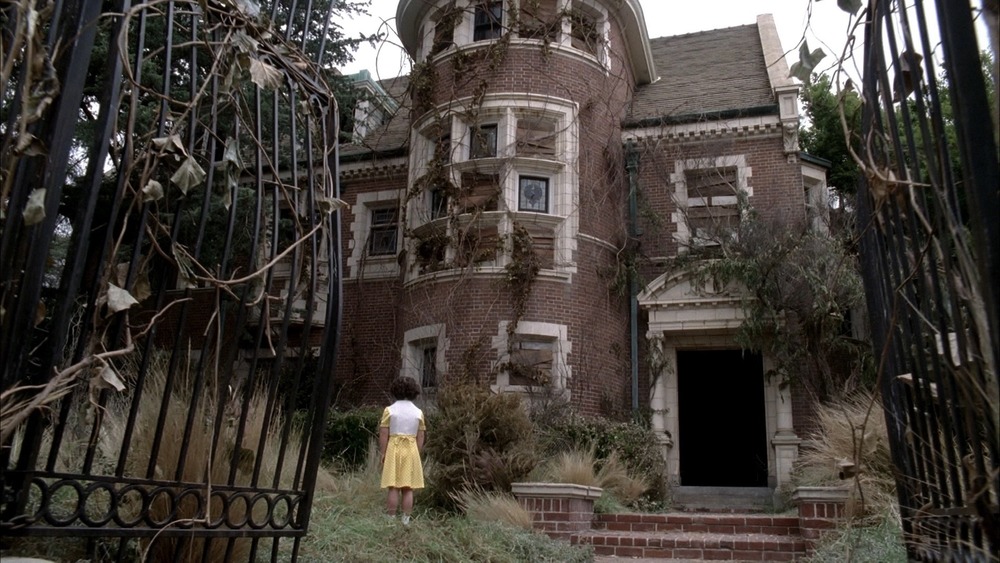WandaVision Production Designer Mark Worthington - Exclusive Interview
Since acclaimed production designer Mark Worthington kicked off his career as an art production assistant on director Dario Argento's horror film classic Two Evil Eyes in 1990, his career has spanned across a wide variety of genres on screens of all sizes. As an art director, Worthington brought his unique craft to such films as Tombstone and the groovy, '70-themed spy romp Austin Powers in Goldmember; as a production designer, he's worked on such television hits on the sitcom Ugly Betty, the mystery series Lost, and the horror anthology American Horror Story.
Yet for all of his experiences over the past 30 years in the entertainment business, Worthington, a four-time Art Director's Guild Award winner, had never done production design on a Marvel Cinematic Universe project until the opportunity came up via the Disney+ series WandaVision. As Worthington discovered, however, WandaVision required some decidedly different artistic sensibilities than the average Marvel project. After all, the series finds Wanda Maximoff, a.k.a. Scarlet Witch (Elizabeth Olsen), and Vision (Paul Bettany) living a seemingly perfect life framed within the world of classic television sitcoms in the community of Westview, New Jersey. On the outside of the "Westview Anomaly "— as it's dubbed by the agents of S.W.O.R.D. — it's the modern-day world that exists after the events of Avengers: Endgame.
In an exclusive interview with Looper for his work on WandaVision — now streaming on Disney+ — Worthington touched on different aspects of his career while explaining his work on his debut project in the MCU.
Designing different decades for WandaVision
It's not unusual for a film or a television show to leap ahead decades within a narrative. But this is really different in that you have this decade for one episode, the next decade for the next, and on and on. Is that a first for you in that you have such of a stark change from episode to episode?
Yeah. Within a distinct episode, yes, that is. I haven't done [a project] quite like that. I mean, when I did American Horror Story, we had, I don't know, six or seven decades within the 20th century and one that's in the 21st century, and in the first season of American Horror Story, we bounced around periods, all that kind of stuff. So I've done a lot of different periods and I've done a fair amount of a lot of period work, so that part wasn't unusual for me. But it was [different] doing distinct episodes within a sitcom format that needed to feel very credibly like a '50s sitcom or to feel like it was created like those '70s shows and so on.
Were you thinking more in a Dick Van Dyke sort of time period in the '50s, or the '50s period itself?
We didn't pick any specific sitcom. It had to be our sitcom, but it had to be recognizable. You have to be comfortable saying "Oh, I completely know where I am." Right? I know I'm in a '50s sitcom, but it isn't. Because if we copied one, then again, it'd be distracting, wouldn't it? It'd be like, "Oh, this isn't quite right." Or this thing, you'd be looking at the set and not the character and not the story. So we consciously didn't do that. And now this is the one-division version, but a '50s sitcom. It triggers those memories and those feelings, and that's what we were after.
How WandaVision's '70s was different than Austin Powers' '70s
Now I know that there's at least one decade that you've dabbled in before on film — the '70s, as the supervising art director on Austin Powers in Goldmember. Was it a little easier to work on the '70s in WandaVision because you'd already done it for Austin?
Well, that '70s vibe for Austin is its own vocabulary. It's so fun and crazy, but yeah, that was great. It can inform it. It's interesting when you get to '70s sitcoms — it's a really particular thing, so you're going back and looking at all these sitcoms. You're looking at the research, the period, looking at the style and the period, generally. What I do is I sort of steep myself in a stew of research and just go through a ton of it, and so it becomes like learning a language in a certain way. So now that you have the syntax and the grammar, you can speak the language and express new ideas within that language. It's sort of like that as a process, if that makes sense.
Now that Mike Myers did the whole Wayne's World commercial during the Super Bowl, I'm hoping you have him on speed dial to do another Austin Powers film.
[Laughs] I haven't talked to Mike in many years. He was also a producer on Austin Powers in Goldmember, so we would have meetings with Mike where he'd try out new jokes that he was rewriting on us, so that was always fun. But yeah, that was crazy. He played three different characters, and three different costumes and makeup in a single day because he's playing all these different characters, which was just, wow. They were long days. We would end up finishing at 4AM on a Saturday — or "Fraterdays," as we called them.
Mark Worthington admires the design of Doctor Strange
Even though this is your first Marvel project, I would imagine that you were somewhat familiar with the MCU. Was there any particular production design or a specific setting in any of those films where you sat back and you said, "Wow. This one, this really impressed me, maybe even inspired me working on WandaVision"?
Not really. I mean, I love a lot of the work. I love the stuff on Doctor Strange, there's some really beautiful design in that. And across the board, there's some really nice stuff from Iron Man on. All of it has its own particularities. It's interesting when you go to Eastern Europe and some of them in these different locales, it's all great. Here we're doing S.W.O.R.D. for the first time. So again, [you have to be] steeping yourself in the language of the MCU, knowing that what you have to do with something distinct for this story.
So I don't know if inspiration is the right word. In other words, I wouldn't want to copy any of that because it wouldn't be appropriate for the idea this has to be its own thing, because we're introducing it in a different way now. But again, you have to learn a language of it in order to speak it, obviously, here. So it's a complex thing. Again, most of it is just trying to soak yourself in it so you've got all the information, and then inflect it through the story in my own particular design sensibility to come up with what we do. It relates to me. It is the MCU now, obviously. But it wants to be distinct because our story is distinct.
Mining for MCU Easter eggs
I talked with WandaVision creator Jac Schaeffer, and obviously there are a lot of great Easter eggs that are hidden within, so I can't help but think that you and Jac and director Matt Shakman, you all put your heads together at some point to say, "Okay, we really do have a lot of work here because there are so many fans that are so invested in this, and they're going to be looking for things that intermesh with other Marvel storylines." Did that happen with you three?
Of course there are Easter eggs in this. Again, I'm not going to get into the details of it, because that's no fun. We don't want to tip that off. People want to discover it on their own. Absolutely. And it was an interplay between what was already in the script, and a lot of it was stuff that we came up with and had conversations about. Some of it was very organic. Our propmaster, Russell Bobbitt, has been doing Marvel films for years, and he had great ideas and contributed that way, too. And obviously meetings with [Marvel President] Kevin [Feige] and [Marvel Co-President] Lou [Esposito] and [Head of Production] Victoria [Alonso], and their input and stuff they wanted. So all of that is sort of part of the process and the fun of it. But it is thoughtful, and those things are there, and we think about them. That's all part of the fun of the MCU with them.
Separating the worlds of S.H.I.E.L.D. and S.W.O.R.D.
We've seen the agents of S.H.I.E.L.D. assemble already, and now we have the agents of S.W.O.R.D. How much of a challenge is it for you to make that sort of separation between the two, because S.W.O.R.D. is its own entity. On top of all these sitcom designs, you have this world outside of the "Westview Anomaly" that you have to worry about, too.
Well, it was sort of interesting. S.W.O.R.D. is a space agency, right?
Yes.
So that's the MCU space agency. So I started with [the idea of], "I'm going to look at NASA. What does that look like?" Obviously, it can't be NASA because it's the MCU, so it's inflected with the MCU sensibility. But actually, it's not all that hard because that's the process, isn't it? What would a space agency look like in the MCU? And S.H.I.E.L.D. is a distinct thing that has its own function, and they have their own logic to that. So although there are some visual similarities, they have to be different. There have to be differences simply because they have very different functions that they perform. So that makes it — I wouldn't say it's easy — but it takes you to different places so that it's not going to feel outside of the world of the MCU, but it's going to have its own personality.
Elizabeth Olsen and Paul Bettany — did they have any input on what you did on WandaVision? Because they know the characters better than anybody.
Yeah. I mean, we were moving so fast. It's not like we never had the opportunity to sit down and say, "What do you guys think?" And the sitcoms are the sitcoms. So yes, they did. And really, the fun of it was that they would come on the set for rehearsals. Sometimes they'd already have part of their wardrobe on and be working on the makeup. And it would be like, "Oh my God." This might be the first time they've seen the set. And it'd be, "This is so...," and they felt like they were in a sitcom then. The environment energized their performance.
Mark Worthington could feel weird vibes in AHS 'Murder House'
Lastly, you mentioned American Horror Story before. That first season was so incredible with the "Murder House" set. When I think of that house, it still creeps me out to this day. Being that it's a real house, I'm wondering if you could feel that creepy atmosphere working in it — the feeling of "You know what? There's some baggage here." It really was another character in the show, and I'm curious if the folks who worked on the series felt the same way.
Yes. The house itself, and we did a version of it on stage and we changed a few things around, but the house itself [the Rosenheim Mansion in Los Angeles] is creepy. It's a weird house with a weird plan. It was designed by, actually, the president of the AIA [American Institute of Architects] in L.A., whenever it was — 1915 it was built. The basement's creepy. Yeah, I would say you can go into that house and you're like, "Something isn't right." And that's why it was chosen. The DNA and the creepiness [of the house] was already there.
